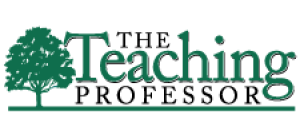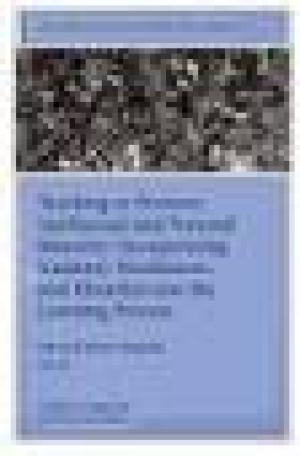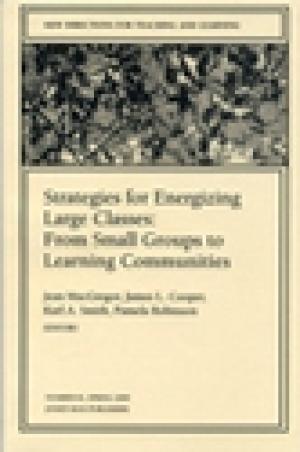Resources

Journal Issue.

This thorough history of the Wesleyan Methodist educational efforts in Victorian England discusses the influence of Dr. James Harrison Rigg, Principal of Westminster Training College, who dominated his church and who made friendships with senior politicians of the day. The book also Looks in depth at the influence of anti-Catholicism, which was rampant in the Methodist church of the era. (From the Publisher)

Revealing that it is not what students think, but rather how they think that is important to the learning process, the contributors to this issue explore the full-range of cognitive and emotional dimensions that influence how individuals learn—and they describe teaching practices for building on these to help students develop intellectually and personally. They examine how students' unique understanding of their individual experience, themselves, and the ways knowledge is constructed can mediate learning. They look at the influence of gender, race, ethnicity, and sexual orientation in shaping the learning process and examine how to create a culturally responsive learning environment for both students and faculty. The issue also explores the role of service learning in developing a strong sense of the caring self, examines the opportunities and challenges of expressing cultural identity in the learning community, and offers various strategies for linking learning goals to students' views of knowledge. (From the Publisher)

The large introductory lecture classes common on most campuses pose a particular challenge to instructors who want to encourage the active student involvement that is a vital part of the learning process. (From the Publisher)

In this issue, the authors argue that adult educators must find ways to add a spiritual dimension to their practice if they are to take a truly comprehensive approach to adult education, one that meets all of adult learners needs. They show how an integral part of adult education is helping learners discover a sense of meaning and purpose in their lives, a feeling of connection with something larger than themselves. The contributors discuss how mentoring, self-directed learning, and dialogue can be used to promote spiritual development, and advocate the learning covenant as a way of formalizing the sanctity of the bond between learners and educators. They draw on examples from settings as varied as continuing professional education, community development, and health education to show how a spiritual dimension has been been successfully integrated into adult education programs. (From the Publisher)
A brief review and annotated bibliography on designing a teaching portfolio.
Very helpful overview, followed by more detailed and extended discussion as well as references.

First taught in the United States in 1971, the Enneagram is now used in counseling settings, corporations, university classrooms (including Stanford Business School) and other educational institutions. The Enneagram system is a model of human development which describes nine patterns of personality. Each type is distinct with its own point of view and focus of attention based on nine psychological strategies. Janet Levine has analyzed the system and refined it for use by educators and students in the quest to facilitate teaching and learning. (From the Publisher)

The Multicultural Campus brings together administrators, faculty, and students to offer strategies that will alter the academic environment of the future. Hispanic, African, and Asian American educational leaders examine the obstacles they have faced, as minorities, climbing up the predominantly white career ladder in American universities. Firsthand accounts show how change on governance, executive, faculty, and curricula levels will help us better educate all students in our nation's growing pluralistic society. (From the Publisher)

On one level, the world of higher education is still, as Matthews puts it, 'a chunk of the 20th century dropped live and squabbling on the threshold of the 21st.' But behind the stately trees and lovely towers a powerful hidden life has taken root, as academe is buffeted by the same economic and demographic forces that are drastically reshaping the rest of society. What's going on in there? And while we're at it, what exactly, these days, is college for? Tracking and mapping the academic year, Matthews casts a searchlight in turn on those who learn, those who teach, and those who arrange, especially the makers and managers of money and image whose methods shape higher education more strongly every year. In the process, she goes behind the scenes at every type of school: enormous state universities like Texas or Arizona, where finding French class requires a map and a bus ticket; sleek country-club schools like Vanderbilt or USC, where student allowances can exceed faculty salaries; fiercely specialized colleges like Cal Tech, where students dream in computer languages; struggling trailer-house campuses like South Dakota's Sinte Gleska, the nation's first Native American university. Throughout, Matthews keeps in unsparing focus the conflicts between our competing images of what college is supposed to be: show business, rite of passage, profit machine, private planet, gateway to knowledge and power. Irreverent, engrossing, vastly entertaining, and intensely observed, Bright College Years is one veteran journalist's (and native daughter's) inside scoop on a beloved American institution in the grip of enormous change. (From the Publisher)
Wabash Center Staff Contact
Sarah Farmer, Ph.D
Associate Director
Wabash Center
farmers@wabash.edu